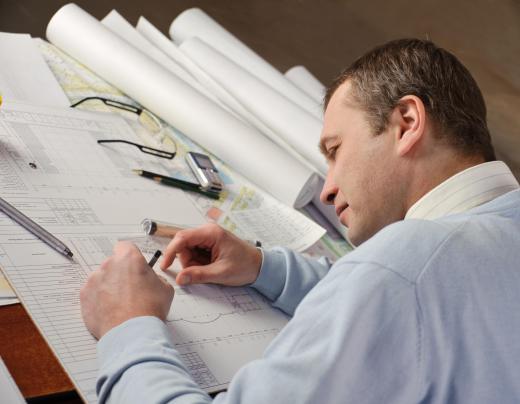A building envelope includes all the components that make up the shell or skin of the building. These components separate the exterior of the building from the interior, and are designed by the project architect or engineers to meet the needs of each individual application. The building envelope may also be defined as the components that separate conditioned areas from unconditioned space. Exterior or unheated living spaces are not included inside the envelope, while any living space that is equipped with heat or air conditioning would be included. The building envelope must be carefully designed with regard to climate, ventilation, and energy consumption within the structure.
There are four basic functions of the building envelope. These include adding structural support, controlling moisture and humidity, regulating temperature, and controlling air pressure changes. By serving these different functions, the envelope also affects ventilation and energy use within the building.

The envelope is made up of all of the exterior components of the building, including walls, roofing, foundations, windows, and doors. Finish materials like siding and decorative items are not usually considered a part of the envelope. Insulation, building paper, and other components aimed at controlling moisture and airflow are typically included in the building envelope design.
Building envelopes are often characterized as "tight" or "loose." A tight envelope is precisely constructed to allow relatively few air leaks. This often requires significant quantities of insulation, caulk, sealants, and energy-efficient windows to create a tight shell for the building. Loosely-constructed envelopes allow air to flow more freely from the exterior to interior spaces. A loose envelope may be created by design, or may be the result of poor construction techniques.
Many experts debate the benefits of tight versus loose building envelopes. A tight envelope allows for a high level of control over indoor air quality, energy consumption, temperature, and humidity levels. It leads to fewer drafts and a more comfortable environment for occupants, and often results in less waste in heating and cooling costs. Tightly-designed envelopes also reduce the likelihood of mold or mildew caused by moisture infiltration, which may prolong the life of building components. At the same time, tighter buildings also limit how much natural ventilation can occur, which leads to more extensive mechanical ventilation requirements.
A loosely-constructed building envelope allows natural air transfers to occur, which improves indoor air quality and often eliminates the need for mechanical ventilation. At the same time these looser buildings tend to be more drafty and uncomfortable, and can make it difficult to regulate temperature levels. There is an increased chance of moisture-related mold, and higher quantities of heated or cooled air are able to escape through leaks in the envelope. This can increase energy bills and negatively impact the environment by increasing greenhouse gas levels.
